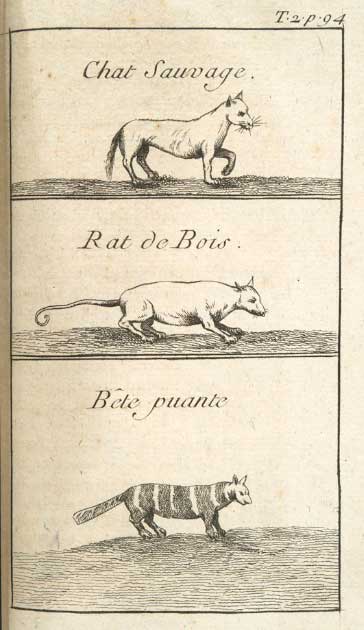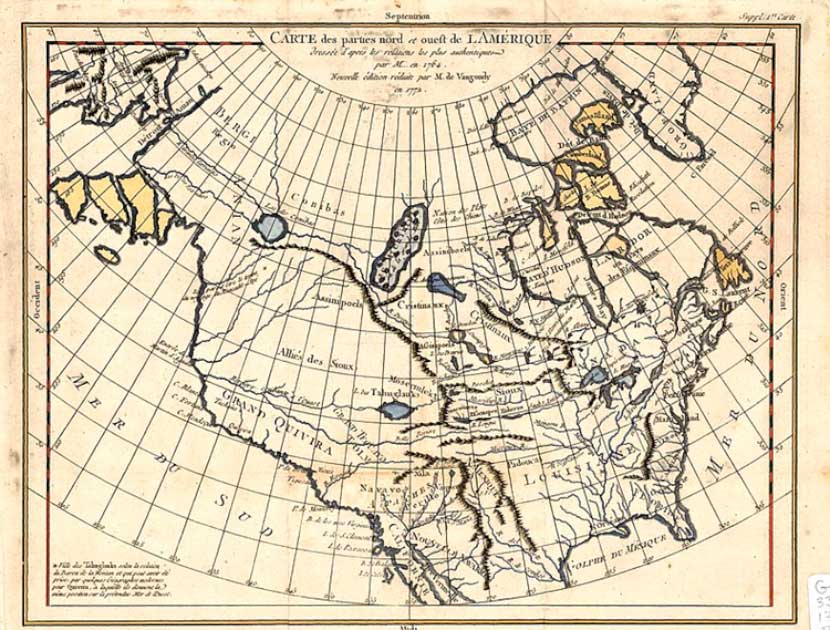Most Americans are familiar with the great explorers of the western United States: Meriwether Lewis and William Clark. The pioneering journey of Lewis and Clark across the great unexplored territory of North America is rightly lauded, and so most will be surprised to find that they were in fact beaten to it, perhaps by as much as a hundred years.
A century before Lewis and Clark’s expedition set out in 1804, or the Canadian Alexander Mackenzie explored the continent in 1793, a Native American claimed to have made the great journey to the Pacific. His name was Moncacht-Apé, which appropriately enough means “Killer of Pain and Fatigue”, and he was a Yazoo from Mississippi.
The Yazoo Native Americans were a sub-group of the Tunica people who lived in the present-day Mississippi river delta. Moncacht-Apé was popularly known as “the interpreter” owing to his proficiency in a number of native languages.
But why would a single man leave his home and travel across the great continent? What was he looking for, and did he find it?
The Account of Le Page
One of the earliest accounts we have of life in the French Louisiana territories, 100 years before Napoleon sold the huge tract of land to the newly minted independent Americans, comes from Antoine-Simon Le Page du Pratz. In the year 1718, Le Page, a French explorer, left France on an expedition with 800 men.

Later that year, he arrived in Louisiana and lived there for the next sixteen years from 1718 to 1734. During his time there he learned the language of the local tribe named Natchez, who lived near the Mississippi River. He became friends with a number of leaders, before eventually returning to France.
It would be another 15 years after his return before he published his great history of the area and its peoples, the Histoire de la Louisiane. Although it was largely a memoir that captured his own experiences of his time spent in America, it provided a great insight into the history and practices of the local Native Americans that might otherwise have been lost..
In the memoir, Le Page mentioned how he was trying to learn about the history of the tribes that lived in Louisiana. While inquiring about the tribes, he was introduced to Moncacht-Apé, a member of the Yazoo tribe.
- A Sea Cow and a Sea Ape? The Strange Discoveries of Georg Steller
- The Thunderbird: Could this Native American Myth be Real?
In his memoir, Le Page wrote about the journey of Moncacht-Apé across the American continent at some point during the seventeenth century. The aptness of the name impressed the Frenchman and, his curiosity piqued, he became keen to know the details of the travel of Moncacht-Apé.
Amazingly, Moncacht-Apé was still alive. Le Page, keen not to miss a first-hand account of the journey, asked Moncacht-Apé to repeat everything about his travels without missing out on any detail. Moncacht-Ape was equally happy to share his experience.
The Journey of Moncacht-Ape
Moncacht-Ape’s travels across North America were not motivated by the desire to explore, or to win fame and fortune for himself. He did not set out for trade or personal gain, but instead to gain insights into the origin of his people. The Yazoo had long held a legend that they came originally not from the Mississippi region, but from far away to the northwest.
After the death of his family members, Moncacht-Apé started his journey to search for the origin of his people. From the Mississippi delta, he started his journey by first heading north. He first reached the Ohio river and, passing Niagara Falls, travelled to the Atlantic ocean.
He then went on, partially retracing his steps to the Missouri River. When Moncacht-Apé reached the Kansas nation, he was told by the people there that it would take him a month in order to reach the headwaters of Missouri. From there, he will have to walk for some days in order to arrive at the westward flowing river. Along that river, he could find the Otter nation of Native Americans.
Just as he was informed, his journey continued in a similar fashion. He received a warm greeting from the people of Otter. They helped him to learn the native language and accompanied him downstream.
After a travel of eighteen days, he found a tribe that did not have a name. Le Page seems as baffled as Moncacht-Apé as to who these people were, recorded only that they used to live in the grassy land where there were a number of dangerous snakes.
Moncacht-Apé spent the winters at that place. Then, in the spring, he continued his journey to what he called the “Beautiful River”, most likely the river Columbia in the Pacific Northwest which is, indeed, beautiful. As he reached close to the Pacific or what he called the “Great Water” (Moncacht-Apé clearly had a knack for descriptive names), he met with another tribe that mainly survived on fish.
Later, Moncacht-Apé joined an alliance of coastal tribes. The people of the tribe were less peaceful than those he had encountered so far, and were actively armed themselves to resist the invasion of aggressive neighbors who had invaded their territory. As Moncacht-Apé had prior experience with firearms, he served as a valuable military advisor to the people.
- Bighorn Medicine Wheel: More than America’s Stonehenge?
- Who Was Squanto? Patuxet Emissary for the Pilgrims
He instructed the people to hide near a cove and watchfully wait for the invaders, described as bearded loggers. When the loggers came ashore, Moncacht-Apé and other people who were hiding attacked and, according to his account, 11 of these invaders were killed. They took the weapons, clothing, and gunpowder of the victims as booty and divided them among themselves.

In helping them to their victory Moncacht-Apé had won the confidence of the locals. He then continued his journey towards the northwest. He reached the last village. There, he met a group of elders who told him that the coast extended a long distance further. According to them, it was once linked to Asia.
This marked the end of the quest of Moncacht-Apé, but this last piece of information especially intrigued Le Page. Moncacht-Apé seemed to be confirming the theory that North America was first populated by migratory settlers over the frozen land bridge of what is now the Bering Strait.
Moncacht-Apé eventually returned to Louisiana. His narration in the memoir of Le Page ended with an estimation of the distance between the Mississippi River and the Pacific Coast. It seemed he never found his people.
Bold Exploration or French Fiction?
Le Page’s memoir proved inspirational for later American and European explorers, who were fascinated by the travels of Moncacht-Apé. Le Page had also published a map on the basis of the route taken by Moncacht-Apé. The travel accounts of Moncacht-Apé may have also influenced Lewis and Clark, who in places took an apparently similar route.
Apart from Le Page, a French army officer, Jean-Francois-Benjamin Dumont de Montigny was the second person to have mentioned the transcontinental journey of Moncacht-Apé. However, the authenticity of both the accounts is quite difficult to prove.
Many believe that Le Page, looking to sensationalize his own journey of exploration, made up large parts of his memoir. There are certainly inaccuracies in the account, descriptions of places we now know not to exist.
Did Moncacht-Apé ever truly exist? Did he make the epic journey Le Page claimed he did? With only the word of the Frenchman for it, we can never be sure.
Top Image: Did Moncacht-Apé cross the great continent of American a century before Lewis and Clark? Source: Torwaiphoto / Abode Stock.
By Bipin Dimri